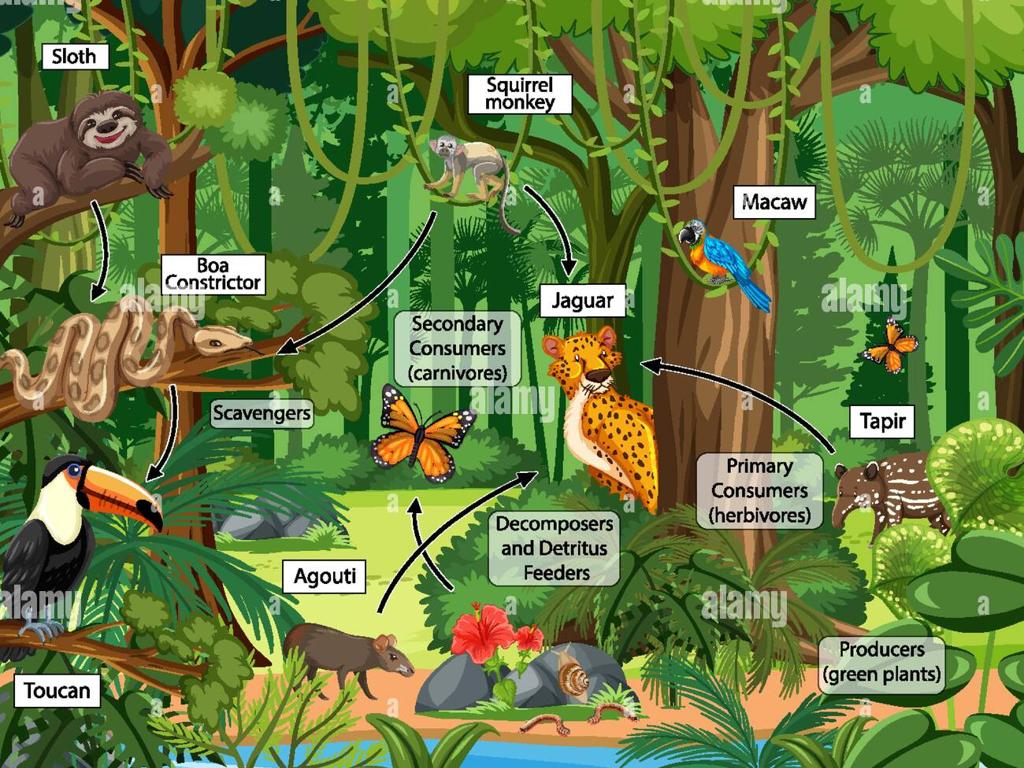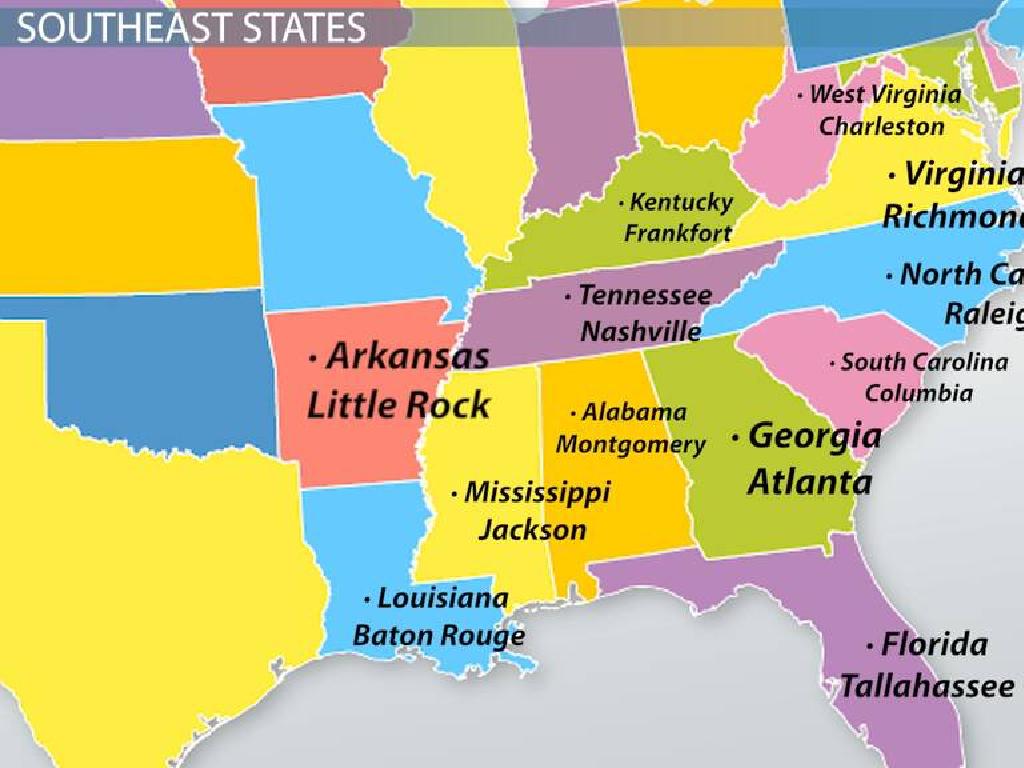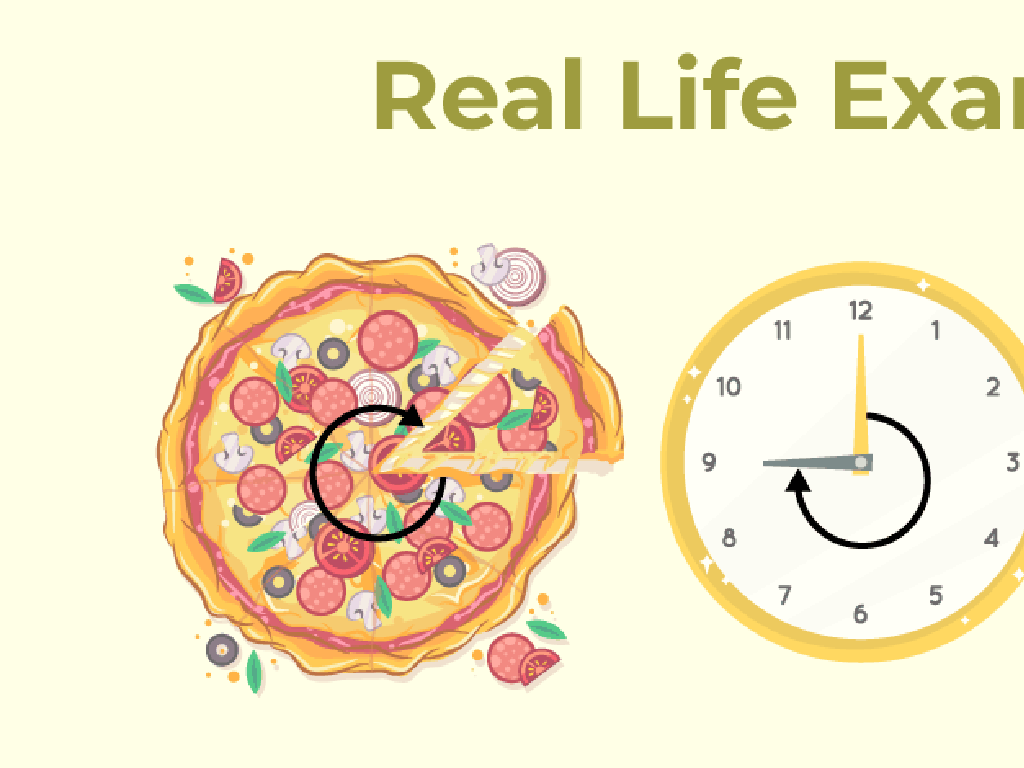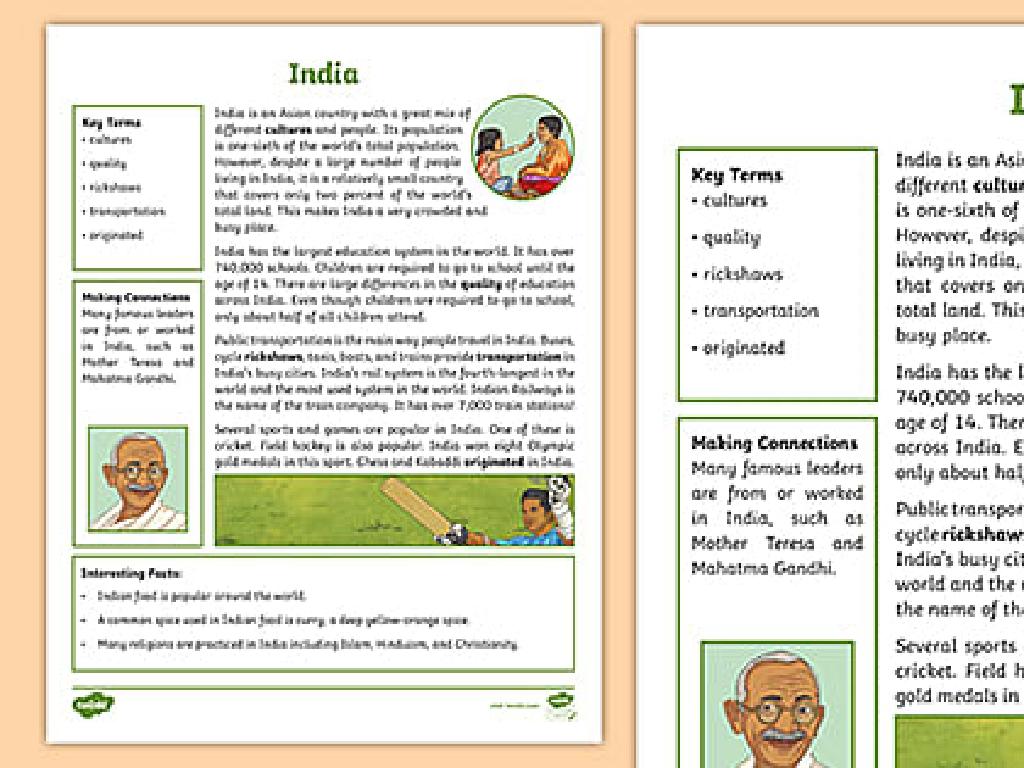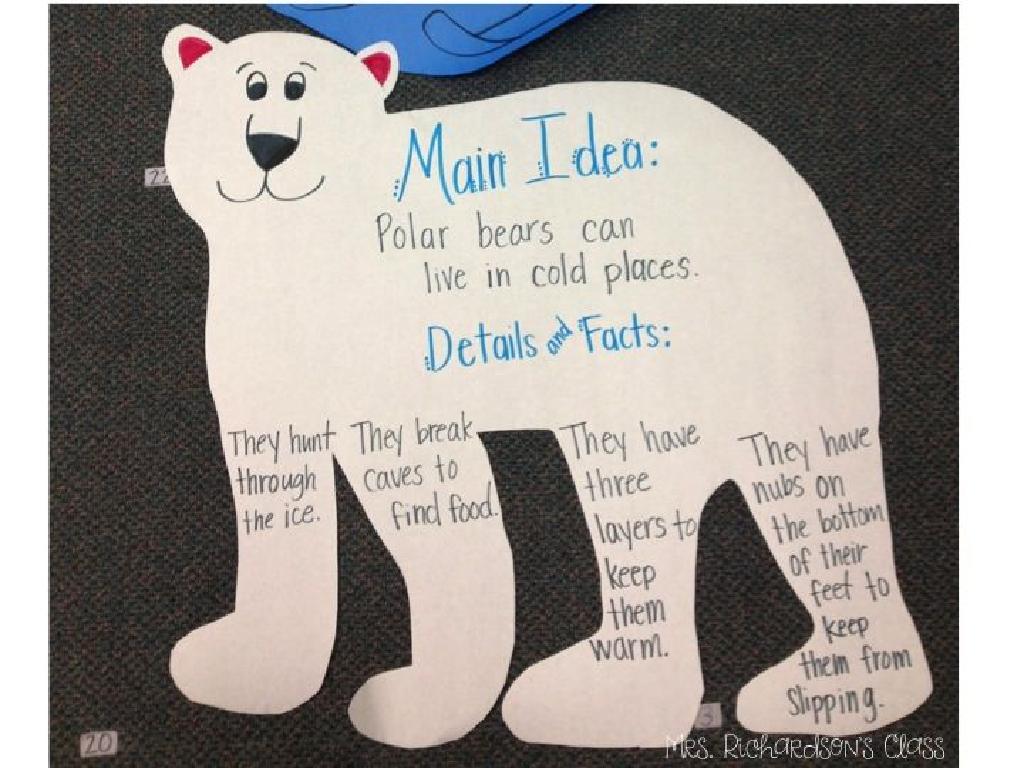Identify Solids, Liquids, And Gases
Subject: Science
Grade: First grade
Topic: States Of Matter
Please LOG IN to download the presentation. Access is available to registered users only.
View More Content
Welcome to States of Matter!
– Exploring solids, liquids, and gases
– Solids are hard and keep their shape
– Matter makes up our world
– Liquids flow and fill containers
– Matter can change forms
– Gases are all around us, like air
– Fun experiments ahead
|
This slide introduces the concept of states of matter to first graders, focusing on solids, liquids, and gases. Begin by explaining that everything around us is made of matter. Solids are things that are hard and keep their shape like rocks or chairs. Liquids are things that can flow and take the shape of their containers, like water or milk. Gases are things we can’t always see but are all around us, like the air we breathe. Use simple language and relatable examples to help students understand. Plan to demonstrate how matter can change from one state to another with experiments like melting ice (solid to liquid) or boiling water (liquid to gas).
Exploring States of Matter
– Matter is everything around us
– Matter makes up all things we can touch and see
– Matter has different forms
– Matter can be solid like a rock, liquid like water, or gas like air
– We interact with matter daily
– Every day we see, touch, and use different kinds of matter
– Solids, liquids, and gases
– Learn to identify solids, liquids, and gases in our surroundings
|
This slide introduces the concept of matter to first-grade students. Matter is a substance that makes up all the things in our world, and it can exist in different forms, namely solids, liquids, and gases. The slide aims to make students aware that everything they can see and touch is made of matter. By providing examples of each state of matter, such as rocks (solid), water (liquid), and air (gas), students can begin to categorize and understand the physical properties of the world around them. Encourage students to think of more examples and to observe the states of matter in their environment. This will help them grasp the concept of matter and its different forms in a tangible and interactive way.
Exploring Solids: A State of Matter
– Solids have a fixed shape
– Unlike liquids or gases, solids keep their shape.
– Solids can be touched and held
– They feel hard and don’t flow like water.
– Examples of solids
– Rocks, wood, and ice are all solids you can see and touch.
|
This slide introduces the concept of solids to first graders. Begin by explaining that solids are one of the three main states of matter and they have their own shape that doesn’t change unless they are cut or broken. Show that solids are hard and can be held, unlike liquids and gases which take the shape of their containers. Provide tangible examples like rocks, wood, and ice to help students visualize and understand the concept. Encourage students to think of other solids they encounter in their daily lives and discuss how these items are different from liquids and gases.
Understanding Liquids: States of Matter
– Liquids flow easily
– They take the shape of containers
– Liquids can be poured
– Examples: Water, Milk, Juice
– Water in a cup, milk in a bowl, juice in a glass
|
This slide introduces the concept of liquids to first graders, emphasizing their ability to flow and take the shape of their containers. It’s important to demonstrate with tangible examples that the students are familiar with, such as water, milk, and juice. Show how these liquids change shape when poured into different containers but the amount of liquid remains the same. Encourage the students to think of other examples of liquids at home or in the classroom and discuss how they behave similarly. This will help solidify their understanding of the liquid state of matter.
Discovering Gases Around Us
– Gases are invisible but everywhere
– Gases expand to fill their container
– Like when a balloon gets bigger as we blow air into it
– Air in balloons is a gas
– Think of how a balloon floats when it’s full of air
– Steam from a kettle is also a gas
– When water boils, it turns into steam and goes up
|
This slide aims to introduce first graders to the concept of gases, which are a part of the states of matter. Gases are tricky because we can’t see them like solids and liquids. Use everyday examples to make the concept relatable, such as air in balloons and steam from a kettle. Explain that gases can fill up any space they are in, which is why balloons expand when we blow air into them. The steam from a kettle is water that has turned into a gas, which is why we can see it rising. Encourage the students to think of other examples of gases they might encounter in their daily lives.
Changing States of Matter
– Matter changes states
– Heat melts solids to liquids
– Ice melting into water
– Cooling turns liquids to solids
– Water freezing into ice
– Examples of changing states
– Water to ice, water to steam
|
This slide introduces the concept that matter can change from one state to another through the processes of heating and cooling. Explain that when solids are heated, they can melt and become liquids. Conversely, when liquids are cooled, they can freeze and become solids. Use everyday examples such as ice melting into water or water freezing into ice cubes to illustrate these changes. Encourage students to think of other examples where they have observed matter changing states in their daily lives, like steam from a kettle or frost on a window.
Let’s Experiment with States of Matter!
– Observe ice melting into water
– Ice is solid, see it become liquid water
– Watch water turn to steam
– Heating liquid water makes steam, a gas
|
This slide introduces a hands-on class activity to help students understand the concept of states of matter by observing the transformation of water from solid to liquid to gas. Start with ice cubes and watch them melt at room temperature, discussing the change from solid to liquid. Then, heat water until it steams, showing the change from liquid to gas. Explain that matter can change states when heated or cooled. For the activity, ensure safety precautions are in place when heating water. Possible variations for different students could include measuring the time it takes for ice to melt at different temperatures, or capturing the steam on a cool surface to see it condense back into a liquid.
Class Activity: Matter Scavenger Hunt
– Find classroom solids, liquids, gases
– Draw or list your findings
– Share with the class
– Discuss states of matter
– Solids hold shape, liquids flow, gases fill space
|
This interactive activity is designed to help first graders identify and categorize items based on their states of matter. Provide clear instructions for the scavenger hunt, ensuring safety and supervision. Encourage students to explore the classroom for examples of solids (like books and pencils), liquids (like a bottle of glue or water), and gases (air in a balloon). They can either draw or write down the items they find. After the hunt, facilitate a discussion where each student shares their findings and classifies the items into the correct state of matter. Reinforce the concept that solids have a fixed shape, liquids take the shape of their container, and gases can spread out to fill an entire space. This activity will help solidify their understanding of the different states of matter through hands-on learning and peer sharing.

